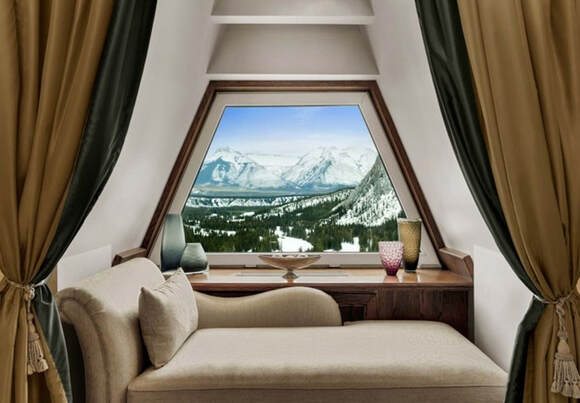The second major leg of the tour took us from Los Angeles to Vancouver, Canada, to board the Rocky Mountaineer train trip. The last stop on this trip was at Banff, where we were booked into the Fairmont Banff Springs Hotel. On arrival we were given our room key and the location of the room was explained. It was not until we got to the room that we realised that we had the most spectacular views from the hotel, across the valley to the mountain range beyond.
There was only one problem, the room walls sloped in rather steeply. For me being, 190 cm in height, it meant walking with bent knees around most of the room, except for a small area near the entrance door. We managed the situation and enjoyed a couple of very special days exploring the township and surrounding areas.

One day we were to take a break from our meetings. We were collected from the proving ground at Gunma, and taken to the nearby village of Mashiko. This is one of the areas in Japan that is renowned for the production of ceramics and pottery. The coach stopped outside this very narrow lane within the village. Myself, and Johnny Marks from South Africa, were the tallest members of the group, both being around 190 cm. An older Japanese gentleman walked down the lane towards us. The older gentleman was from the business we were about to visit, he would have been all of 150 cm tall, and when he stooped over he was even shorter. He took myself and Johnny Marks by the hand, one on either side of himself, and walked us back down the lane. One of our group did take a photograph, however I do not have a copy.
The man took us to what appeared to be a small factory building, which was in traditional Japanese style and looked very old.
Inside there were potters throwing dinner plates in one room. In the next, were mainly women, decorating these plates with two blue bands, similar to the one shown here, but the bands were about half of the width. In the next room the plates were dipped in glaze and placed on racks. I believe that the kiln area was off to the side of the facility, however we were not taken in there due to space restrictions and safety concerns.
As we walked out of this smaller building into a huge enclosed space, we were greeted with the sight of literally hundreds, if not thousands, of these plates on racks. There were also rows and rows of racks with serving trays, bowls of various sizes, and a variety of other crockery items, all decorated with the same two blue bands. It was then explained to the group that this business supplied the crockery for most of the 5 star hotels in Tokyo, and they had been doing it for over 400 years. These hotels replace their crockery every 12 months, so there is a constant flow of work for the factory.
Trigger 3: Whilst watching the telecast of the Melbourne Cup, I noticed a horse called ‘Tralee Rose’. This brought back a flood of memories from times past when my father, who had a magnificent tenor voice, would sing this song to my mother, when coaxed at public events. The original Tralee Rose was also Mary O’Connor, the beautiful young girl who inspired the annual Rose of Tralee International Festival. The song ‘Rose of Tralee’ dates back to an original poem written in 1846 by Edward Mordaunt Spencer. The words of the song are credited to Edward Mordaunt Spencer and the music to Charles William Glover, and from records, it appears to have been written around 1850, although no accurate date was located. The song had a revival in 1930, when John Mc Cormack sang the song at the Tralee Festival. It was later recorded by such greats as Mario Lanza and Bing Crosby.
The chorus,
Though lovely and fair as the rose of the summer
Yet, 'twas not her beauty alone that won me
Oh no! 'Twas the truth in her eye ever beaming
That made me love Mary, the Rose of Tralee.
Barry O’Connor.




 RSS Feed
RSS Feed
